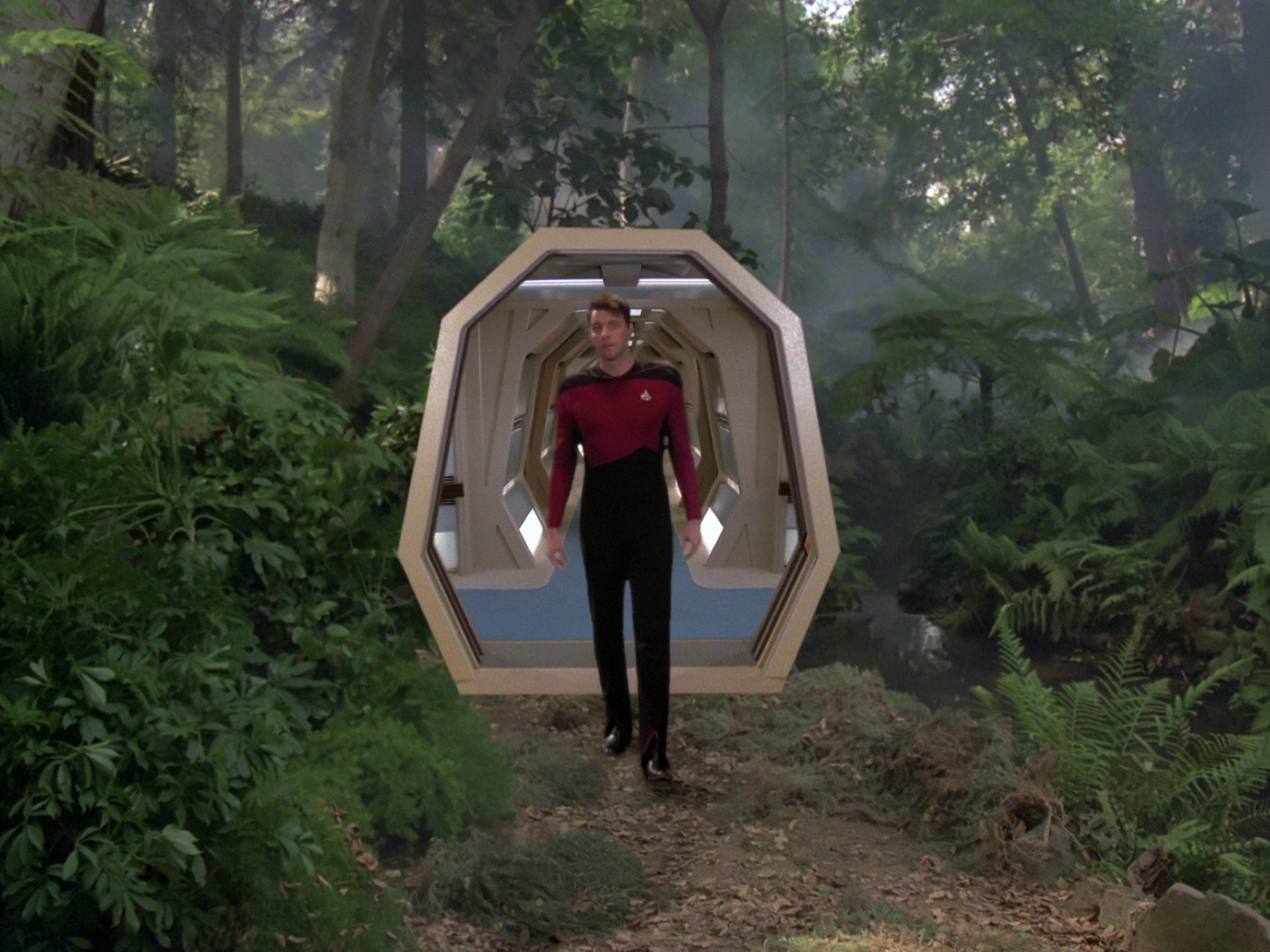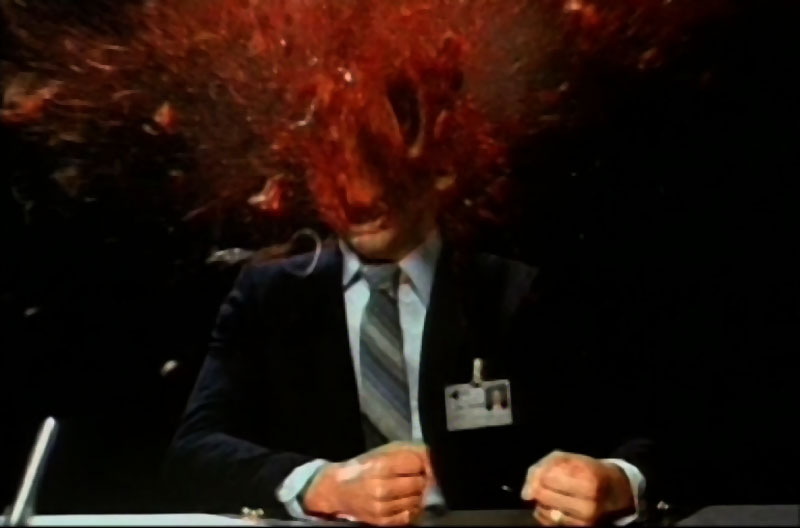I'm putting this blog on pause just until after New Year's. I won't be around for a New Year's post, so I'll discuss New Year's resolutions on January 4th.
Friday, December 28, 2012
Tuesday, December 25, 2012
Friday, December 21, 2012
Tuesday, December 18, 2012
Article: A Completely Roundabout Way of Discussing the Future of Game Development
My first article for this blog was about making sound important. In it, I discussed several
ways to integrate sound into gameplay so it wasn't just there for ambience and
immersion that could be muted, but made necessary to complete the game.
Now I would like to take a step back and think about the
likelihood of sound ever becoming that important.
 |
| I swear I'll get to the future of games eventually. Get some popcorn. |
When I think of watching a movie, there are a few types of
movie-watching experiences. One is when
I take the movie seriously, pay close attention, turn off the lights, sit in
the glory of surround sound, and forget about the rest of the world. Another way to watch a movie is to riff on it
as you watch it, and this is usually reserved for bad movies or B-movies. The lights don't need to be off, and for all
it matters, the sound could be mono. Of
course, sound is still necessary, but it takes a back seat to the voices of the
viewers who want to joke about it.
These two movie-watching experiences have analogs in
games. Getting soaked into the world and
eliminating distractions is often the case for hardcore gamers. The sound is up so you can catch every piece
of dialogue, so you can hear your enemies sneaking up on you, so you can hear
to your teammates talk to you. When you
are interrupted by the rest of life butting in, you get frustrated.
Sound doesn't matter so much--or at all--in casual and
mobile games. You might be listening to
your own music, or you might be multitasking, and sound becomes a distraction. You might need to pay attention to the person
in the room with you, or maybe you're listening to the news on TV. An interruption from something else doesn't
matter, because you aren't 100% focused on the game anyway.
In these instances, sound becomes detached from the game
completely. Even when I play hardcore
games, like MMOs, I will often have the sound muted, and I will be playing in a
window that only takes up half the screen, so I can watch YouTube videos at the
same time.
We live in a world of multitasking, and it's difficult to
push everything else away to do one thing, like watch a movie or play a game
with undivided attention. We still can
do that, but with the increase in mobile game platforms slowly becoming the
norm (and will soon take over hardcore gaming in revenue), dedicated playtime
will be tougher to manage. If you want
to experience games in the serious, undivided way, you may have to have a room
dedicated to games, or perhaps one that doubles as a home theater for movies.
In order for sound to matter in games in the way I suggested
in my first article, this kind of dedication is important. And if consoles continue to have as big a
presence as they do today, that will probably happen.
But the slow uprising in mobile and casual means that more
game developers will dip their toes in those markets--even developers who
traditionally make hardcore games. If
they find there is truly more money to be made in casual, they will swing that
way, and leave hardcore gamers in the dust.
 |
| Meet your new avian overlords. |
On the other hand, indie gaming is becoming bigger and
bigger. Now, currently indie studios
make the low-tech games, because they are low-cost as well. Indie is big on 2D, old-style platformers,
for instance, which bring back the nostalgia of older gaming eras, and remind
us that just because the industry has moved on, that doesn't mean there isn't
any innovation to be found in older game genres.
But with the lowering cost of technology and game
development software, indie companies will soon (5 years to put a random number
on it) be able to make games of today's industry standards of quality with
fewer people, more cheaply. There may
then be a shift of hardcore gamers from playing big studio releases to playing
games by indie studios, while the giants of game development shift focus to the
wider swath of casual and mobile gamers.
As usual, companies follow the money, indies do what they love.
But if the big companies shift from hardcore to casual, that
includes the hardware manufacturers.
Microsoft, Sony, and Nintendo may stop making consoles--or, at least,
they will stop marketing them that way.
An Xbox 360 currently does roughly ten bajillion more things than just
play games. The next Xbox (or Durango , as it is
codenamed) will do more, and probably won't even be marketed as a gaming device
so it can get wider appeal. While it
will play games, that will be a side-feature to how it interacts with your TV,
smartphone, PC, and other devices in your home.
It will probably still offer a XBLA-style service for indies to show off
their stuff, and major game developers will continue to make hardcore games for
it (though probably downloadable and discless), but the generation of consoles
after that?
 |
| Something like that. |
Consoles like the Ouya will pick up the slack. Now we're seeing the rise of the indie
console, and the next generation indie console after the Ouya will probably
have top-shelf capabilities, and it will be the place where indie companies can
make hardcore games, to make up for the loss of Big Developer's switch to
casual and mobile.
It'll make an interesting sea-change, but I think indies
will rise in prominence and the age of big developers will wind down.
Well, at least until we get holodecks, I'm sure. Then sound will probably be important again.
Friday, December 14, 2012
Tuesday, December 11, 2012
Development Log: January Engine - Week 7
Been a while with this project because I've been spending a
lot of time with paper-and-pencil, which doesn't upload well. However, I have the .swf in its latest state
uploaded, which you can play HERE.
Changes from last time include: making the hexes you can't
click on invisible, smoothing out scrolling (which can be done with the arrow
keys or WASD), and cards at the bottom, representing your hand. Refresh a few times to get either two Yellow
Cards or two Green Cards. If you do get
them, you can pass your cursor over green/yellow hexes to see a popup which
indicates that you can place green/yellow squares on the hexes. (Well, you can't place stuff yet, but I'm
showing that I have the code in place to understand combinations of cards).
Now, that's not particularly too much work done, code-wise,
but I've done a lot of design work:
The game I am designing is a combo of Magic: The Gathering
and am RTS. Basically, you use simple
resources which are in your hand (as shown in the demo), to combine and create
units, buildings, and spells, and place them on the hex grid. The units/buildings on the grid are represented by icons, but they can be expanded to view the stats of it in card format.
As for the goal of
any given level, I have many possibilities, but I'm not sure which I like best.
This card shows you all of the possible stats you may have
on a unit or building card.
On the bottom, the seashell-shaped swirls are health. Any unit or
building can have between one and five health.
The tricky things are on the left. The large hex is the primary color of the
card, and is the color hex you can place the unit/building on (if it's a unit
that can move, all that matters is that it's initially placed on that color).
It is also the first color resource card you must use to place this
unit/building on the grid.
The next six hexes below it are other resources needed, and
they can be the same or different color as the primary resource. Black indicates any color resource. The majority of cards will take less than
seven resources, and the hexes will simply be missing to avoid confusion.
The next three hexes, A, R, and M, with numbers inside,
represent Attack, Repair, and Movement stats.
Attack is how many resources you must pay to attack another
unit/building with this one. Repair is the
number of resources it takes to repair one health point on this
unit/building. Movement is how many
resources it takes to move this unit/building (usually a unit) one hex
space. These stats are always black, so
you can use any color resource to do it.
The bullseye and the human eye below represent range and
sight, respectively. If the unit/building
can only attack in melee range, the range is one. Sight is used to remove fog of war.
As you can see just by this one card, this is shaping up to
be a radically different game than I began this project as, and I like it a lot
more.
Saturday, December 8, 2012
Article: When the Power Goes Out
I spent all last night up watching YouTube videos about the
coming singularity, the day when man and machine become one, when we will be
able to download our consciousness into a computer. Fascinating stuff.
Also discussed was how the internet will evolve in the
coming decades, how technology will follow Moore 's Law through quantum computing, and
how we'll soon have microchips in our brains.
Older videos mentioned fashionable augmented reality glasses, which is
of course Google Glass right now.
 |
| I would still prefer it shoved right into my prescription glasses. |
Then, today, the power went out. Nothing dashes my hopes for a perfect
futurist techno-utopia faster than the power going out. As I type this, the power is back on, but my
cable is still down, so I don't have internet access. (Hence, this is posted a day late.)
I'm already at the
point where I can't live without the internet.
I use it when I should be asleep!
What happens when I have microchip in my brain that connects me to
everyone in the world, and the cable goes out then? (Of course, even calling it cable at that point is just quaint.)
But let's bring this terrifying picture of an unstable
matrix back to games; after all, that's what this blog is here for. And we'll even step back from the future and
come closer to the present.
Right now some of my favorite games are online. I can't play them at this moment. I recently saw a tweet that read
(paraphrased) "Don't like streaming games?
Tough. That's the way games are
going."
My internet connection has always been unstable. I am constantly booted off my MMOs because of
connection failures. Fortunately, for
now, I can still play older games that are installed on my machine, no
connection necessary.
I think what the twit meant in the tweet above is that game
developers are spending considerably more resources creating MMOs and online
multiplayer games (that aren't massive), like Scrabble with Friends. (Ahem.)
I doubt that "all" videogames will go that way, but it seems
to even be a trend now in single-player games that you must have a live
connection to the internet to play (often for no other reason than anti-piracy
BS).
Of course there is absolutely zero reason to require a
connection for a solitary game (and speaking of, I half expect Solitaire to
require an internet connection soon), but it certainly seems reasonable for
MMOs to require it.
But there is actually an interesting solution to this MMO
connectivity issue.
Suppose I'm playing DC Universe Online. There are distinct solo instances, and wide
open worlds for both PVE and PVP combat.
Now, not much can be done in PVP if your internet connection sucks, but
I submit that all other aspects of the game do not require a connection.
If my internet connection dies while playing DCUO, I am
dumped out of the game with a picture of Brainiac (as if it's his fault, I
imagine) saying I was disconnected.
Sometimes my disconnections only last a few minutes while I go reset my
modem.
When a disconnection occurs, I do not immediately get
booted. First, the music dies. Next, I notice the world is devoid of both
other players and enemies. Nothing is
loading but the world geometry itself.
After a half minute of being lost in purgatory, I finally get kicked out.
But is it truly necessary for this to be this way?
What if instead, the world and enemies were installed on my
computer (something is certainly installed on my computer already, taking gigs
of space, so I wonder what that is if not the world). That way if I am disconnected, I still get to
play a single-player instanced version of the world I'm in.
My own computer would then save any data it's accumulated,
such as completed missions, increased experience, and the like, and when I get
my connection back, that data is sent to the servers. It should be a seamless process I don't even
notice unless I'm trying to chat with a fellow player who disappears on
me. (And since disappearing players is a
common occurrence when logging off or switching servers or channels, I still
might not suspect anything).
I'm sure it's a bit of a technical challenge from a
networking and engineering standpoint, but I don't see why it should be the end
of the world to make it work.
But anyway, until that works, if the power goes out again,
there's always board games.
I just hope that when we have computer chips in our brains,
a power surge doesn't make our heads explode.
 |
| Oops. |
Wednesday, December 5, 2012
Usual Monthly Update
Sorry about the lack of posting; got a lovely cold, but it's all over but the coughing.
I'm going to go back to a normal two-day-a-week posting schedule for December, just because it's the holidays, so expect posts on Tuesdays and Fridays for this month.
As for The Glitchers Webcomicbook: being that I only wrote
two more pages before I hit a block, there's not much else to post. I think I'll wait until at least I finish the
second episode before posting it.
Instead, for this month, expect a random assortment of
reviews, articles, and other usual posts.
No real plan this month. Probably in January I will have another Monthathon or some other kind of themed month. Until then: stuff!
Subscribe to:
Posts (Atom)






